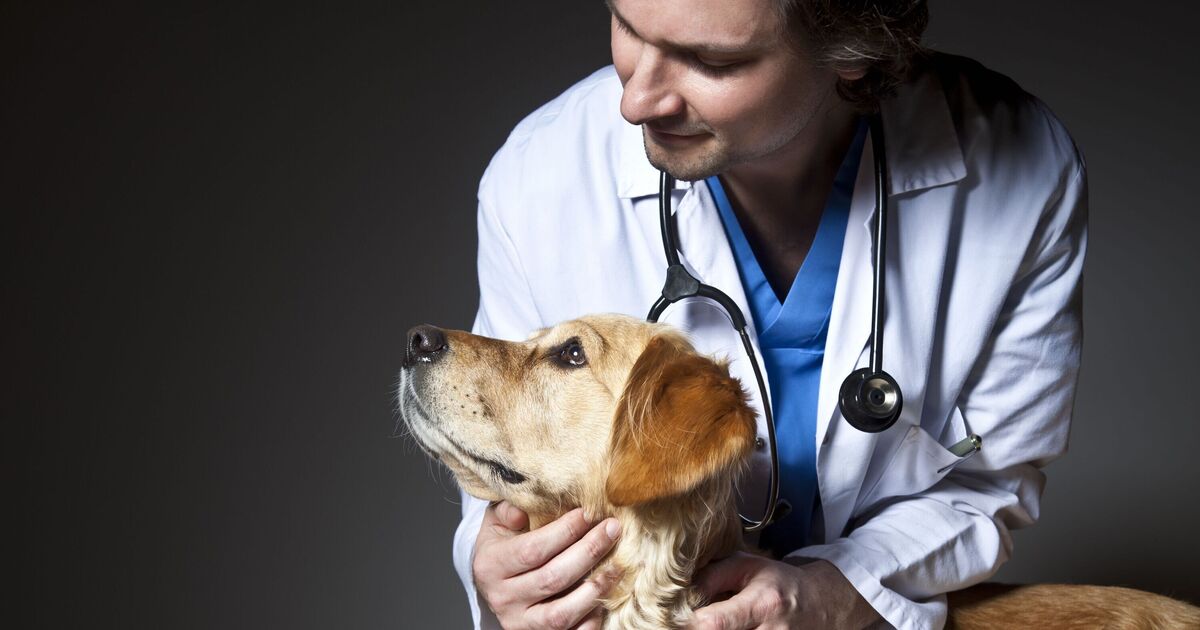
We all know pups are good to cuddle and can perk you up when you’re feeling low – but it turns out the man’s best friend can also identify when you’re ill.
In a wave of new research, scientists are discovering that dogs can detect everything from minor health worries to potentially life-threatening diseases in humans. And the findings are opening up new therapies and treatments. Here we reveals all about the amazing medical power of pooches.
Stress: Canines seem to know if their owner is stressed. It’s down to the fact that their sense of smell is up to 10,000 times better than ours.
Researchers at Queen’s University, Belfast, discovered that dogs can pick up on subtle changes in the smell of sweat and breath in humans when their blood pressure is raised, compared to when they’re relaxed.
It’s hoped the findings will lead to the training of therapy dogs to help ease anxiety. Petting a dog has been shown to lower levels of cortisol, the stress hormone, too.
Migraines: These severe headaches often come with additional symptoms which can be debilitating, such as nausea and vomiting, and sensitivity to light and sound. Taking painkillers early in an attack can help ease their severity and length, so it could be particularly handy to have a pup around as it seems they can provide early warnings.
In one US study, over half of sufferers noticed a change in their dogs’ habits shortly before the onset of a migraine, with the canines sitting closer to them or pawing at them. It’s thought the animals pick up on tiny behavioural clues in their humans.
Covid: Remember those endless Covid tests we all had to do? If there’s another pandemic we might end up using dogs to detect the lurgy. In a study published in the Journal of Osteopathic Medicine, it was found that our four-legged companions could sniff out Covid-19 – and even do so more accurately and faster than a PCR test.
The scientists found that some dogs were even able to detect the virus in pre-symptomatic and asymptomatic patients. This could pave the way for non-invasive tests for viruses in the future.
Diabetes: It’s thought that there are about 4.4million people living with diabetes in the UK, where the body can’t make the hormone insulin to regulate its blood sugar levels and can sometimes lead to seizures and cause people to become unconscious.
A 2016 University of Cambridge study found dogs could sense a chemical called isoprene on the breath of patients when their blood sugar drops.
Scientists at the University of Bristol also found that trained alert dogs could identify 83% of episodes, helping those living with the condition to take preventative action. It’s even been shown that some of the furry geniuses can even beat the machines, sometimes outperforming blood sugar monitors.
Parkinson’s: The progressive brain condition, which affects one in 500 Brits, causes tremors and weakness, has no cure and is hard to diagnose. But with their 300m smell receptors, dogs may be coming to the rescue. In tests, dogs were able top pick out the scent of Parkinson’s in 90% of cases and it’s believed that they may be able to spot it years before symptoms even set in, offering better treatment options.
Epilepsy: Seizures in epilepsy, which affects over 600,000 people in the UK, are associated with a specific odour that dogs can pick up on. A 2021 study, reported in the journal MDPI Animals, suggested that pups can predict epileptic seizures, which could potentially save their owners’ lives.
Some dogs have now been trained up as seizure-alert dogs, to sense and notify their human companions of an oncoming seizure up to 45 minutes or more before one starts.
Cancer: In a 2006 study, trained dogs were able to sniff out breast cancer with 88% accuracy and lung cancer with an amazing 99% accuracy, just by smelling samples of human breath.
Pups have also been able to detect cervical cancer from human urine, while in 2013 it was reported that an Alsatian dog suddenly began licking their owner’s mole, which prompted them to go and see a doctor. On medical examination, it was found that the mole had developed malignant melanoma, a serious form of skin cancer. About 30% of melanomas begin in existing moles.
This post was originally published on this site be sure to check out more of their content.








































